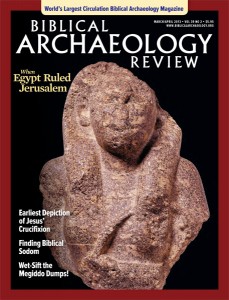First Person: What to Do with Unprovenanced Artifacts—Publish or Perish?

Two books recently came across my desk that reveal yet another cleavage within the archaeological profession.
In some respects the books are quite similar. Both are collections of papers delivered at scholarly conferences that were then gathered together to make a book. Both have senior scholars among the presenter-authors. Both books are edited by husband-and-wife teams—one by Eric and Carol Meyers and the other by Meir and Edith Lubetski. And a final similarity: Both teams of editors are friends of mine.
Otherwise they are quite different.
A major focus of the Meyers book, titled Archaeology, Bible, Politics, and the Media, is the antiquities trade.1 For the presenters at their conference, the antiquities trade is anathema.
For example, one participant is quoted describing “the corrosive effects on archaeology wrought by the trade, legal as well as illegal, in ancient artifacts.” In other words, not just the trade in looted artifacts but even the legal purchase and sale of ancient artifacts—say, of items that have been in a family for generations—is “corrosive.” In the view of these scholars, such assertions of provenance are not to be trusted: “Euphemisms such as ‘from the collection of a Swiss gentleman’ or ‘a family heirloom’ litter the pages of auction catalogs and are endemic to eBay and other internet sites.”
Already a library member? Log in here.
Institution user? Log in with your IP address.

